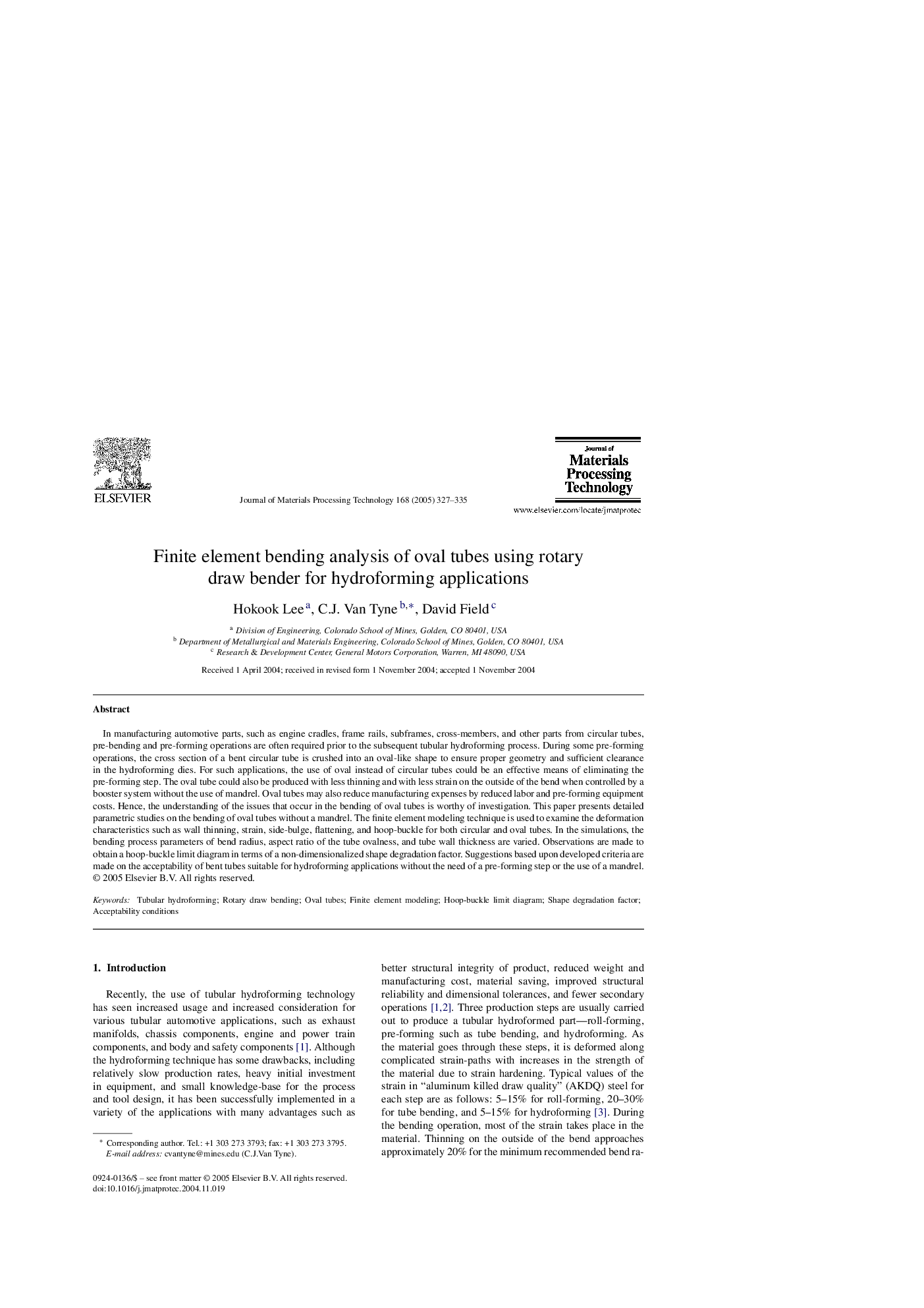| Article ID | Journal | Published Year | Pages | File Type |
|---|---|---|---|---|
| 10418814 | Journal of Materials Processing Technology | 2005 | 9 Pages |
Abstract
In manufacturing automotive parts, such as engine cradles, frame rails, subframes, cross-members, and other parts from circular tubes, pre-bending and pre-forming operations are often required prior to the subsequent tubular hydroforming process. During some pre-forming operations, the cross section of a bent circular tube is crushed into an oval-like shape to ensure proper geometry and sufficient clearance in the hydroforming dies. For such applications, the use of oval instead of circular tubes could be an effective means of eliminating the pre-forming step. The oval tube could also be produced with less thinning and with less strain on the outside of the bend when controlled by a booster system without the use of mandrel. Oval tubes may also reduce manufacturing expenses by reduced labor and pre-forming equipment costs. Hence, the understanding of the issues that occur in the bending of oval tubes is worthy of investigation. This paper presents detailed parametric studies on the bending of oval tubes without a mandrel. The finite element modeling technique is used to examine the deformation characteristics such as wall thinning, strain, side-bulge, flattening, and hoop-buckle for both circular and oval tubes. In the simulations, the bending process parameters of bend radius, aspect ratio of the tube ovalness, and tube wall thickness are varied. Observations are made to obtain a hoop-buckle limit diagram in terms of a non-dimensionalized shape degradation factor. Suggestions based upon developed criteria are made on the acceptability of bent tubes suitable for hydroforming applications without the need of a pre-forming step or the use of a mandrel.
Related Topics
Physical Sciences and Engineering
Engineering
Industrial and Manufacturing Engineering
Authors
Hokook Lee, C.J. Van Tyne, David Field,
